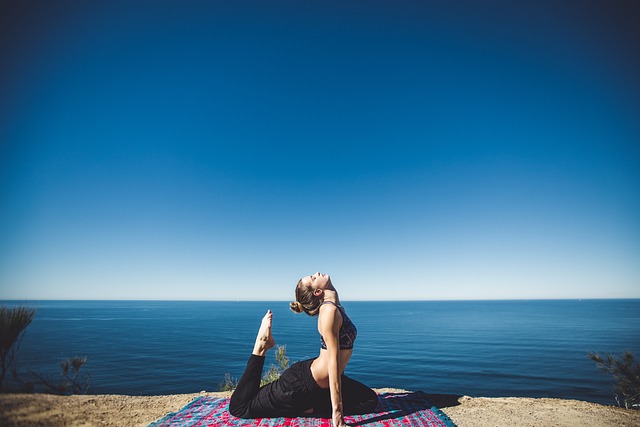Mindfulness is becoming an increasingly popular approach to foster wellbeing and inner peace. Practicing mindfulness through yoga is a powerful way to bring awareness, focus, and clarity into everyday life. Yoga has the potential to help us explore our inner selves and better understand how we think and feel. It allows us to get in tune with our bodies and minds, developing both physically and emotionally. This article will detail how yoga can be used as a tool for harnessing mindfulness and share tips on how you can use yoga to improve mindfulness.
Introduction
Yoga is a popular physical activity that has gained immense popularity in recent years. Its combination of physical and spiritual discipline can be beneficial to both the body and the mind. Incorporating mindfulness into your yoga practice can help deepen your experience, as well as bring more balance to your life.
Mindfulness is the practice of focusing on the present moment, without judgment or expectation. Practicing mindfulness through yoga helps cultivate an inner awareness and connection between body, mind, and spirit. In this way, it can reduce stress levels while increasing concentration, focus, and relaxation. When practiced regularly—with deep breathing—mindful yoga poses allow us to better cope with challenging situations by increasing our capacity for patience, acceptance and understanding of ourselves and others.
Yoga is a substantial form of exercise, and it has many physical benefits. However, there is more to yoga than just the workout. We can use Yoga as a tool to increase your mindfulness levels and make you calmer in everyday life.
What is Yoga?
Yoga is an ancient practice that originated in India. Practitioners of Yoga are called Yogis. In the West, we think of yoga as a physical practice only; however, there is much more to it than just poses and stretches. Yoga is a way to connect with your body and mind through mindfulness and meditation that can have profound effects on both aspects of health!
What makes Yoga more than a workout?
Yoga is more than just a workout. The practice of yoga can apply to all aspects of your life, from how you approach your work and relationships with others to how you take care of yourself physically.
Raja Yoga, one of the eight branches of Hindu philosophy, focuses on connecting the mind with the body. Yoga teaches that when there’s a healthy balance between these two things—and when your mind is clear—you’ll have a better understanding of who you are as an individual and what it means to live in this world.
Practicing Mindfulness Through Yoga
Yoga is a great way to practice mindfulness. Mindfulness is a state of active, open attention to the present. When you’re mindful, you observe your thoughts and feelings from moment to moment without judging them, good or bad.
In yoga class, being mindful means paying attention to your body as you move through the poses. For example, when you do Warrior 1 pose (also known as Virabhadrasana I), focus on how your arms feel as they stretch up toward the sky. Or when transitioning out of Downward Dog pose (Adho Mukha Svanasana) into Plank pose (Kumbhakasana), notice how it feels for your hands and feet to press into the mat or floor—notice how much strength it takes for those bones and muscles to do that work!
Yoga has many physical benefits, but it is also a great practice to incorporate into your life if you are looking to increase your mindfulness levels.
Yoga is a fantastic way to become more mindful. Yoga practice helps us to be more aware of the mind body connection. While many people think of yoga as a physical exercise, it’s also very much an emotional and mental workout—you’re constantly being challenged to focus on the present moment rather than being distracted by experiences or future worries.
Besides strengthening muscles, the benefits of yoga go far beyond strengthening willpower. Yoga can help you learn mindfulness so you can recognize the times when your mind has strayed off into space. By practicing mindfulness through the practice of yoga poses, you’ll train yourself to be present in any moment while learning how to curb the intrusion of your thoughts.
Conclusion
Whether you’re new to yoga or have been practicing for years, it’s important to remember that you can adapt this practice to fit your needs. It doesn’t matter if you are using yoga to increase physical wellness or simply looking for an alternative method of stress relief, there is something special about the combination of movement and mindfulness that makes it so effective at helping us feel more present in our lives. The key here remembers that there are no right answers; whatever is best for you we encouraged!
Yoga is an excellent way to practice mindfulness and live a healthier, more mindful life. It encourages you to be aware of yourself both physically and mentally, helping you to stay in the present moment. By taking time to focus on your breath, your posture and being gentle with yourself, yoga can help reduce stress and anxiety. If practiced regularly with the right guidance, it can provide a platform for emotional healing and personal growth.






5